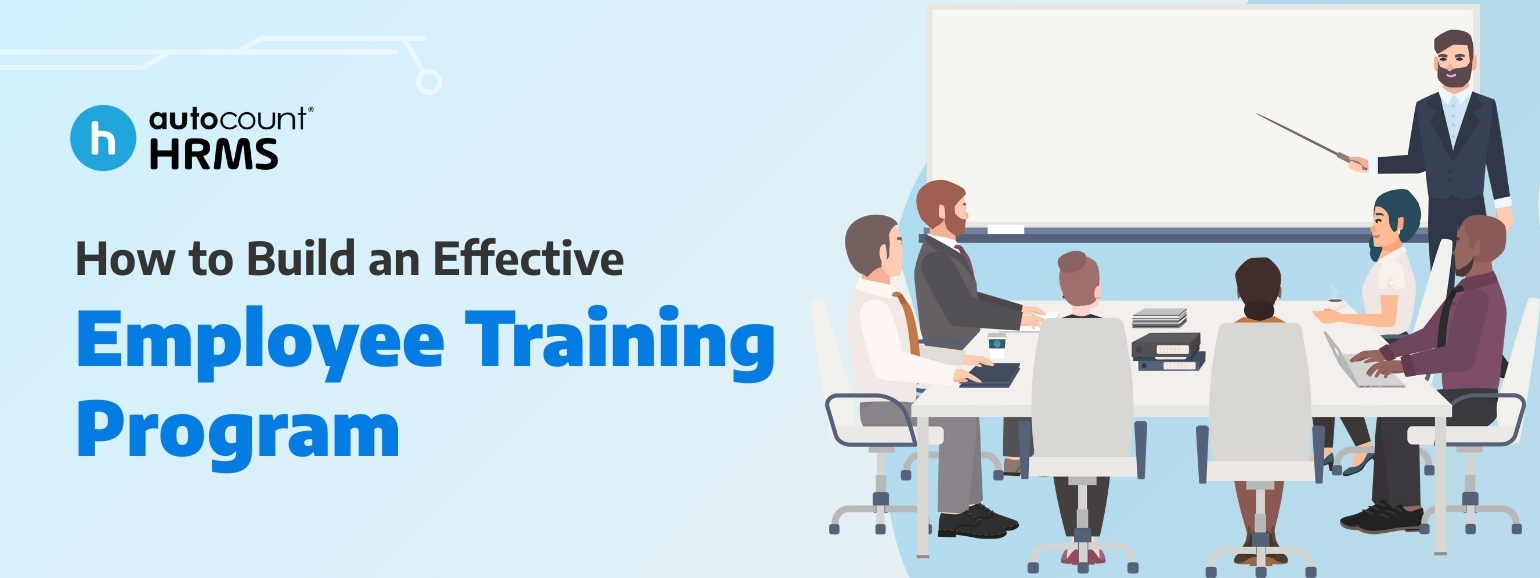
How to Build an Effective Employee Training Program for Better Results
In our previous article, HRDC Training Grant Guide: How to Maximise Your Training Investment, we explored how companies can leverage grants to reduce training costs.
This time, let’s take the conversation further: How can organisations design a company training program that is structured, cost-effective, and results-driven, ultimately ensuring greater effectiveness across the workforce?
The “External Training + Internalisation” Model
The most effective employee training programs blend external expertise with internal reinforcement. This creates a cycle of learning that strengthens results over time:
- Learn from external trainers: Employees attend structured, high-quality programs.
- Apply internally: Teams put new skills into practice through daily tasks and projects.
- Share knowledge: Employees transfer their learnings via team discussions and mini-sessions.
- Sustain improvement: Skills become embedded in the company’s culture for long-term effectiveness.
This approach ensures training is more than a one-time event; it becomes a continuous improvement process.
Key Steps to Building an Effective Employee Training Program
To ensure company training delivers measurable outcomes, organisations should follow a structured approach:
1. Conduct a Training Needs Assessment (TNA)
Identify skill gaps across your team. Are employees struggling with compliance requirements, digital adoption, or leadership skills?
A recent report from ATD Research reported that 79% of participants stated that training needs assessments help align training with organisational objectives. A training needs assessment ensures training addresses real challenges, making it more effective.
2. Choose A Suitable Training Method
While new training methods continue to appear, several established approaches have consistently proven effective in building employee skills. Here are some of the most widely used:
- Orientation Programs
- Lectures
- Computer-Based Training (CBT)
- Workshops
- Role-Playing and Simulation
- Blended Learning
Whether delivered through a handbook, a one-on-one session, or a group briefing, the purpose is to introduce employees to the company’s mission, vision, culture, and objectives. Orientation also familiarises them with workplace policies, rules, and expectations, helping recruits feel grounded from day one.
Lectures are particularly cost-effective, since they eliminate the need for individual sessions. However, this approach can be less interactive, as it mainly relies on one-way communication, and trainers may find it difficult to assess participant engagement or understanding.
Computer-based training uses digital platforms, e-learning modules, or virtual tutorials to deliver structured lessons. The key benefit of CBT is flexibility; employees can learn at their own pace, at a time and place that works best for them. It also reduces overall training costs by minimizing travel, instructor fees, and training time.
Workshops encourage active participation through discussions, group activities, and problem-solving exercises. Unlike lectures, workshops emphasize interaction and hands-on learning, making them effective for developing practical skills.
This method places employees in real-world scenarios where they must respond and make decisions as they would on the job. Role-playing is especially effective for improving communication, customer service, and conflict resolution skills. Simulations, often supported by digital tools, allow employees to practice complex tasks in a safe and controlled environment.
Blended learning combines multiple methods such as online modules, workshops, and coaching sessions into one integrated program. This approach maximises flexibility and engagement by mixing self-paced learning with face-to-face interaction.
3. Align Training with Business Objectives
Training should support company goals such as process efficiency, digital transformation, or customer satisfaction. For example, training in data analytics may directly improve decision-making and reporting accuracy.
Encourage employees to apply their learnings through:
- Peer-to-peer knowledge sharing
- Assignments requiring the new skills
- Integration into KPIs or appraisals
This reinforcement ensures long-term retention and effectiveness.
4. Measure Training Outcomes
Evaluate results using performance metrics, employee feedback, and manager observations. Did productivity improve? Are employees more confident? Measuring ensures continuous improvement in company training.
Build a Culture of Effective Learning
Investing in an employee training program is about building long-term effectiveness, not just completing a checklist. External trainers bring expertise and structure, while internal reinforcement ensures skills are retained and applied.
The most successful companies are those that don’t view training as a cost but as a strategic investment in effectiveness. By adopting the “external training + internalisation” model, supported by HRDC funding, you can build a workforce that learns, adapts, and thrives.